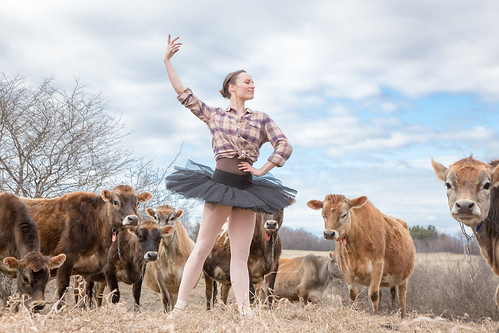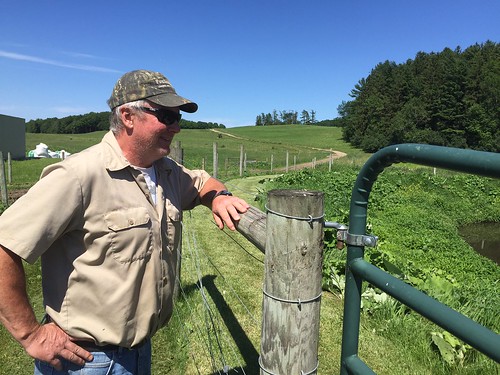
Vermont’s agricultural history will soon be enriched as a new Farm to Ballet project aims to celebrate the state’s farming culture and expose a new audience to the beauty of classical ballet. The endeavor is the brainchild of former professional dancer and Vermont native Chatch Pregger. His farm-based ballet tells the story of a Vermont farming operation from spring to fall.
The fertile soils of Vermont’s pastoral farmland will provide the ‘stage’ for the dancers. “Now that I've seen the dancers, in a farm environment, I realize this is how I've always wanted to see ballet--in this setting. In its grittiness, its reality--on nature’s perfect stage,” he explained. Farm to Ballet will be presented seven times throughout August at a variety of farming operations. The performances are not financially supported by USDA, so the Farm to Ballet project initiated a fund raising campaign to cover the cost of costumes, props and sets, and many of the shows serve as fundraisers to support and honor the work of Vermont’s farmers and the local food movement.
One of the venues is Shelburne Farms. The USDA-Natural Resources Conservation Service in Vermont has worked closely with the operation to protect and improve natural resources through participation in numerous Farm Bill programs, including the Environmental Quality Incentives Program and the Conservation Stewardship Program. The educational nonprofit is set on a 1,400-acre working farm and campus that hosts over 150,000 visitors a year onsite. Originally created in 1886 as a model agricultural estate, today Shelburne Farms is dedicated to education for sustainability programs for educators and young people.
The farm was recently awarded a $100,000 grant from USDA’s Farm to School program to support Vermont Feed, a project of Shelburne Farms in partnership with NOFA-VT, which provides farm-to-school training and professional development services to schools and farmers across the Northeast.

Sam Dixon has served as the dairy farm manager at Shelburne Farms since 1996. He manages the farm’s grass-based dairy and pasture-raised livestock. “NRCS has been a great partner and resource for us,” he said. Because of the farm’s location along the shores of Lake Champlain, the farm’s commitment to conservation is a critical step to protecting water quality. “We are very conscious of what we do on the land and how our actions impact water quality in the lake,” says Dixon.
Shelburne Farms’ conservation plan includes a rotational grazing system, riparian buffers, fencing, cover crops on vegetable gardens, wildlife habitat improvement, nutrient management planning, and more.
Dixon says he thinks the ballet will help the public see farming in a new light. “It’s not going to recruit farmers to be ballet dancers,” he chuckles, “but I do think getting people out to a farm will help make that connection between the food they eat and where it comes from.”

At the market garden at Shelburne Farms, Josh Carter manages three acres of certified organic mixed vegetables and a small fruit orchard. He emphasized that the goal is crop diversity. “We grow over 50 types of crops and 150 varieties.” Utilizing EQIP assistance, he worked with NRCS to install a high tunnel which the farm uses to produce peppers, tomatoes, and eggplant, late into the fall. “The high tunnel increases the value of the crops and the quality,” he explained.
He also said the structure helps protect the crops and reduces or eliminates disease issues by reducing moisture. Carter is excited that the Farm to Ballet project will reach a new audience and help them see the farm as an integral part of the local community.
“When folks come here to see the ballet, the lens is the performance, and they will understand that just like the arts, farming is also part of our community.”
The ballet follows a farmer through the stages of planting, irrigating, tending and then harvesting the farm’s produce and concludes with a celebratory farm share pick-up scene just before the geese fly south for the winter.
Pregger says his interest in local food production is what motivated him to take on this project. “I am a ballet dancer –not a farmer– but I think healthy food production is crucial to a healthy society,” he explained. And, he has lots of ideas for the future, and is not finished with his plan to help strengthen Vermont’s local food scene. He’s even brainstorming ways to bring the show to food deserts, where local foods aren’t as accessible or plentiful.
“My hope is that this effort will spotlight Vermont as a place where agriculture, arts and community come together.” The Farm to Ballet project promises to be a feast for all and will help educate the public about the importance of conservation and sustainable agriculture.

